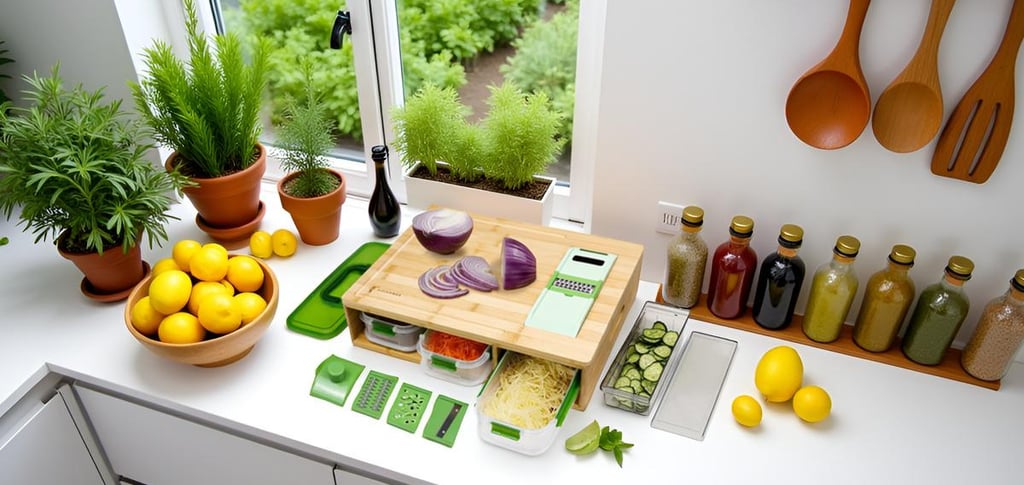How to Choose, Clean & Use Cutting Boards Safely
Learn how to use, clean, and select the best cutting board for your kitchen. Follow safety tips to keep your meals hygienic and your tools long-lasting.
BAMBOO KITCHEN PRODUCTSBAMBOO
5/13/20252 min read


How to Use a Cutting Board Safely and Efficiently - Cutting Board Safety Tips
Using a cutting board may seem straightforward, but there are important safety and efficiency techniques every home cook should follow to avoid accidents and make meal prep easier. Whether you're slicing vegetables or carving meats, mastering proper cutting board usage will elevate your cooking experience.
Cutting boards are essential kitchen tools that support nearly every food prep task. However, if used incorrectly, they can become sources of kitchen injuries and food contamination. By learning the correct methods of using, maintaining, and storing cutting boards, you not only ensure a safer cooking environment but also extend the life of your kitchen tools. From choosing the right material to keeping things sanitary, this guide will walk you through the essentials of cutting board safety and efficiency.
Why Cutting Board Safety Matters
A cutting board is one of the most-used tools in the kitchen. Improper use can lead to:
Cross-contamination (especially between raw meats and vegetables)
Slips and cuts
Faster wear and tear on your knives and boards
By following a few simple guidelines, you can ensure a safer and more efficient prep experience.
1. Choose the Right Cutting Board
Different boards suit different tasks:
Plastic boards are ideal for raw meat because they can be sanitized in a dishwasher.
Wood and bamboo boards are better for fruits, vegetables, and bread.
Glass boards should be avoided — they dull knives quickly and can be slippery.
Recommended Product:
Check out the MOSOMBOO Bamboo Cutting Board – a sustainable, knife-friendly option for everyday use.
2. Keep It Steady
A board that slips is dangerous. To stabilize your board:
Place a damp towel or non-slip mat underneath
Use boards with built-in rubber feet or grooves
The Smart Bamboo Cutting Board Set from Mosomboo comes with a non-slip base and storage containers, making prep and cleanup easy.
3. Use the Right Knife Technique
Keep your fingers curled inward ("the claw" grip)
Use a sharp knife — dull blades are more dangerous
Cut with a rocking motion when using chef’s knives
4. Clean and Sanitize After Each Use
Wash your board immediately after use with hot, soapy water
For deeper cleaning, sprinkle coarse salt and rub with a lemon
Sanitize plastic boards with a bleach solution; oil wooden boards monthly to prevent cracking
5. Avoid Cross-Contamination
Always use separate boards for raw meat, poultry, and vegetables. Consider color-coded or labeled sets.
Pro tip: Rotate between two bamboo boards — one for produce and one for cooked foods.
Frequently Asked Questions (FAQs)
Q: Can I use one board for everything?
A: It’s safer to use at least two boards — one for raw meats and another for veggies or bread — to avoid cross-contamination.
Q: How do I stop my cutting board from sliding?
A: Place a damp towel or non-slip mat underneath your board, or choose a board with built-in grips.
Q: How often should I replace my cutting board?
A: Replace when it develops deep grooves that are hard to clean. Bamboo boards tend to last longer with proper care.
Q: Are bamboo cutting boards safe for knives?
A: Yes! Bamboo is tough yet gentle on knives, making it a great middle ground between plastic and hardwood.
Where to Buy
Looking for a reliable, eco-friendly option? Check out our premium MOSOMBOO Bamboo Cutting Board Set on Amazon — complete with built-in containers and juice grooves for a mess-free, organized prep experience.
Upgrade your kitchen with Mosomboo. Your knives (and fingers) will thank you!
MOSOMBOO
© Copyright Mosomboo 2022 - 2025. Site Built and Managed by IntelliPath
Follow us on Social
CATEGORIES
MENU
INFO
